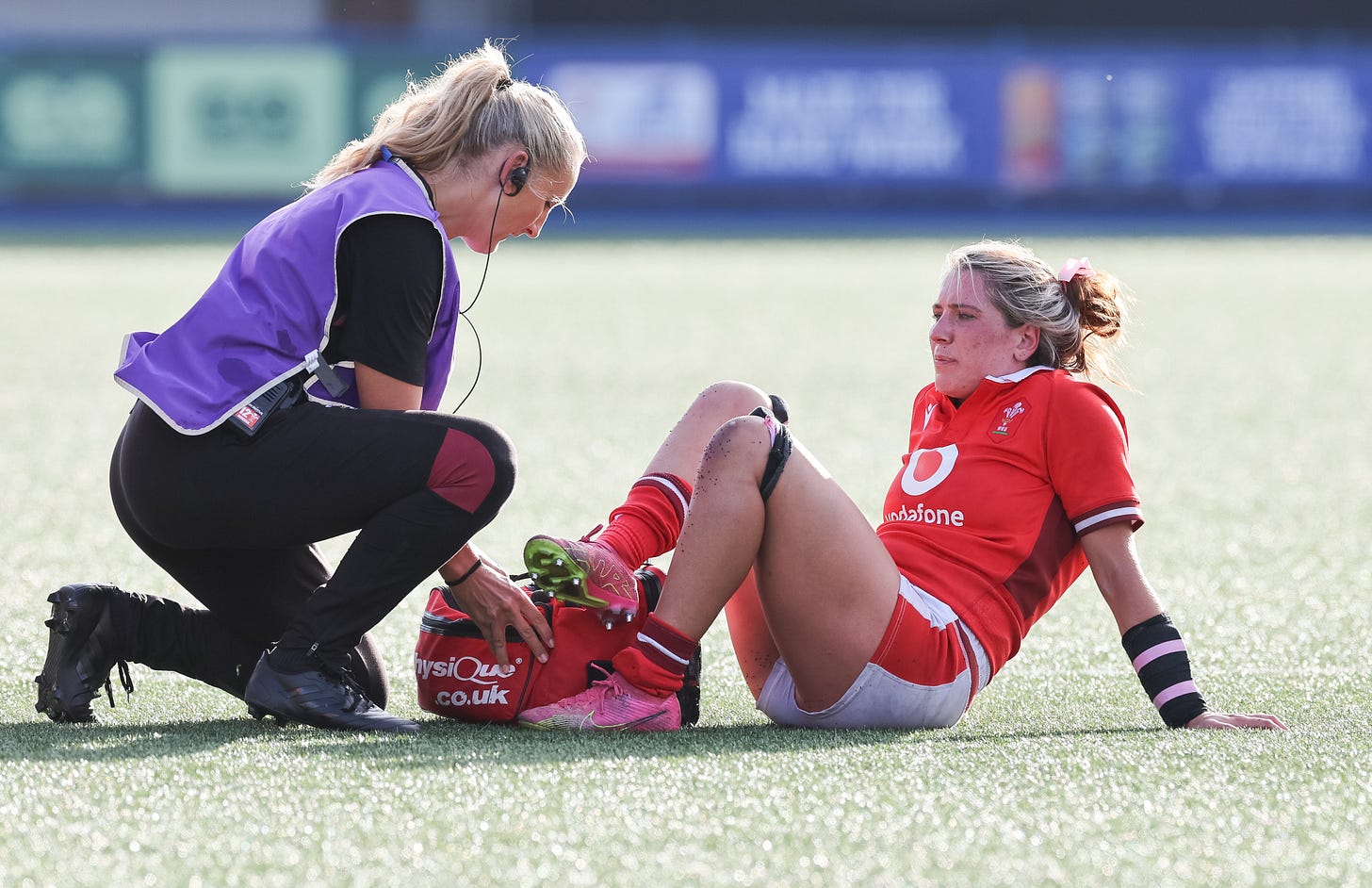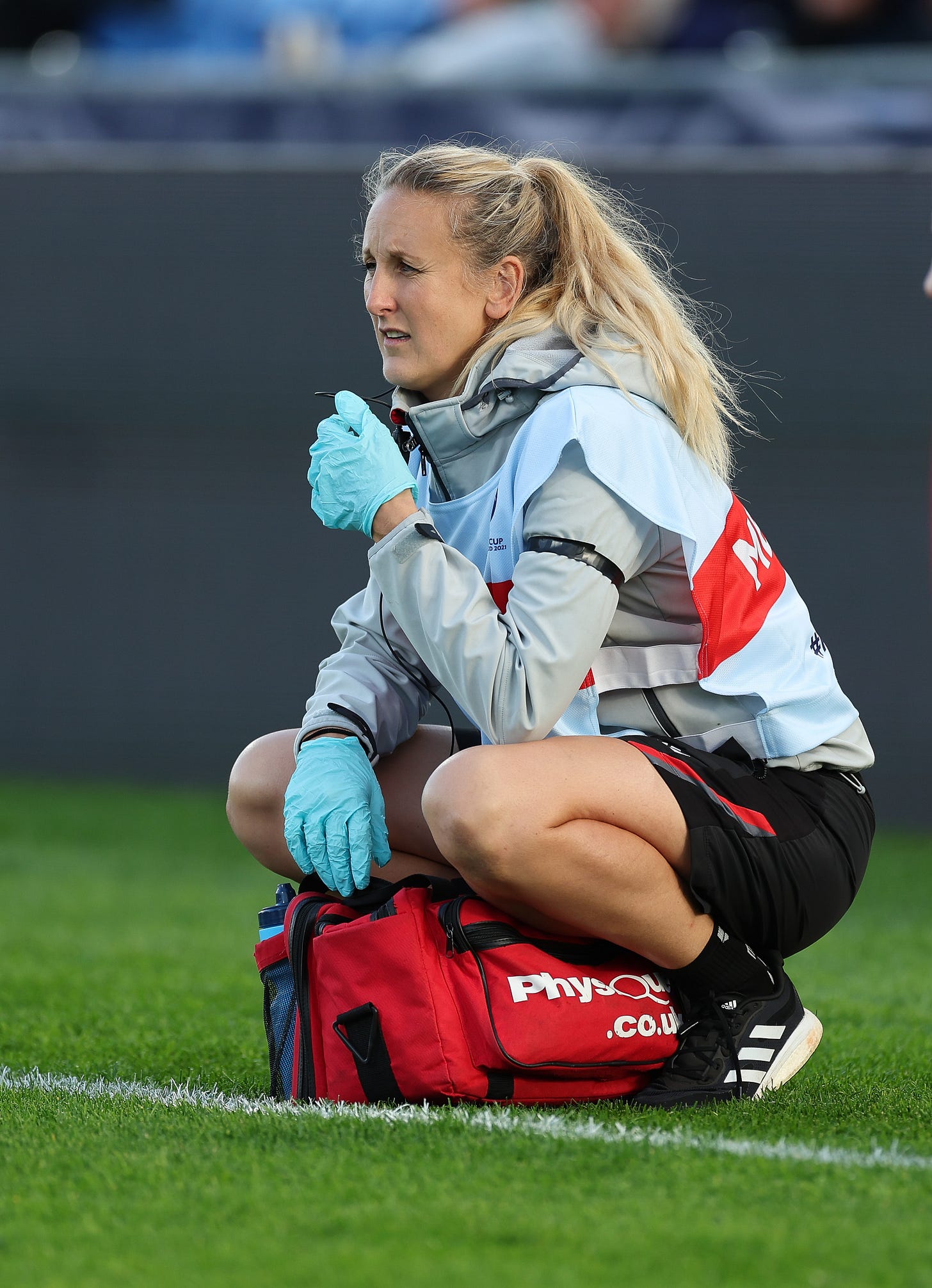ACLs and injury prevention
The Welsh Rugby Union have a new set of injury prevention exercises focused on the ACL. Head physiotherapist for the WRU womens squad, Jo Perkins, explains more about ACLs and rugby.
The Welsh Rugby Union have a range of videos focusing on the injury prevention of the ACL. The videos include exercises such as air squat and single leg hops. The videos give good explanation of how to do each activity, and they can be easily incorporated into your on pitch training.
Jo Perkins, explains more:
Ruptures to the ACL can result in a lengthy time away from rugby due to long rehabilitation periods compounded by lengthy waiting lists for surgery on the NHS. Surgery and rehabilitation costs are also high resulting in a large financial burden to individuals and the NHS.
All the above may mean that some players never returning to the sport at all or return at a lower level. Reinjury rates in females are also more common than in men and unlike other tissues, injuries to the ACL generally result or full or near ruptures rather than small strains.
Therefore, they are injuries that are rightly demanding attention around prevention, particularly for women. Studies have shown that effective prevention programmes can reduce injury rates by up to 60%.
Many think that injury rates have increased in women, yet we have always known females are at a higher risk than men. The reality is that more females are playing sport now and with increased training hours since the rise to professionalism in sports such as football and rugby union, has rightly drawn more media attention around the sport and associated injuries.
Where is the ACL?
The knee joint is formed by the femur (thigh), tibia (shin ) and patella (knee cap). These bones are connected by ligaments, strong rope like tissues. There are 4 main ligaments in the knee;
Medial and lateral collateral ligaments (MCL and LCL) whch are found on the sides of theknee and limit side to side motion
Posterir cruciate ligament (PCL) and Anterior Cruciate ligament (ACL) which are found inside the kee and cross each other to prevet forward and back motion. The PCL is injured less frequently than the ACL.
Typically non contact ACL injuries are from a quick change of direction to side step a defender for example, landing with poor mechanics from a high ball or a sudden deceleration.
Injury prevention programmes therefore need to address these areas, by having good strength in the muscles that connect around the knee and hip and optimal movement strategies with side stepping and decelerating to prepare rugby players for these movements.
Injury risk factors
Female rugby players are up to 8 times more at risk of ACL injuries compared to their male counterparts, and 80% are non contact injuries so it is important to understand why this is happening.
Risk factors for injury are often multifactorial and can be modifiable (things we can’t change such as our anatomy) and modifiable (meaning we can take measures to change them):
Anatomy: Females have a greater Q angle compare with males (the angle between the hip and knee) which increases the angular stress on the knee joint. This is often referred to as a ‘valgus’ position which is seen during cutting and landing, and is a risky position for injury
Strength: Quads - Hamstring ratio. Females have stronger quads compared with male counterparts which increases the forward pull on the tibia. This places the ACL under more stress during deceleration and landing particularly.
Hamstrings aren’t typically muscles that younger girls may train without guidance either, adding to the dominance of the quadriceps and under development of the hamstrings.
Skill error/landing and cutting technique: Performing the tasks in vulnerable positions such as the knee falling inwards, landing with an upright posture or stepping with foot out wide and with foot rotated out also put the ACL at risk.
Age: The greatest age risk is 15-25 years. Implementing prevention programmes at an early age results in fewer ACL injuries. Additionally, females tend to have less of a training history and potentially therefore differences in physical conditioning compared to men
Hormones: There is a small amount of evidence to show that ACL injury is a higher risk during ovulation. However, it is important to remember that not everyone gets injured around ovulation. Some females ask about taking the oral contraceptive pill to mitigate this risk, which has proven ineffective.
If we maximise strength, stability and coordination this small risk can be mitigated. Therefore it is vital to track your cycle to identify these patterns and put strategies in place such as extra mobility and strength exercises during these times to mitigate the risk.
Footwear: The majority of footwear has been designed and tailored to men. Broadly speaking women have narrower heels, higher arches and wider balls of feet and therefore the same footwear may not fit appropriately.
There is not definitive research around footwear and injury risk but what is advised that women try numerous boots that result in a good fit and are comfortable.
Surface: The literature around surface and injury risk is also mixed. Not everyone injures on the same surface so again it is important that the correct footwear is worn taking into account the weather and surface
When and how can exercises be done?
Not all exercises require a gym. There are programmes such as fifa 11+ , PEP and Word Rugbys’ Activate which are more field based if players don’t have access to the gym.
Activate aims to decrease overall injury risk too including upper body, neck and head injuries so is a useful tool for all age groups. All programmes should include:
Plyometrics
Strength training for key muscle groups (quadriceps, hamstrings, gluteals)
Encouraging balanced muscle development to avoid quadricep dominance.
Landing mechanics with feedback on vulnerable positions
Core strength and stability
Agility and coordination drills
10-15 minutes, 3 times per week is a good time for focus on these areas. They can be integrated into warm ups and gym programmes, effectively to provide female players with the tools they need to minimise their risk.
Keeping things simple is really important and more likely to lead to improved compliance and consistency. If coaches include too many programmes initially but aren’t continued resulting in an increased injury risk.
Try and find exercises which give the most bang for your buck and players can do well without lots of attention, particularly if you don’t have other staff to help you such as a full time physio and S and C teams.
Educating players on ACL injuries and the importance of the exercises you are prescribing is also helpful in encouraging compliance
Tips from Jess: How you could include the exercises in your coaching
When introducing exercises for the first time, add them in as a standalone block within your session. Give players a few weeks to practice them and get the technique right.
When introducing the exercises, and intermittently afterwards, emphasise their purpose. Let your players know why they’re doing the activities.
You can then keep the exercises as a static block or vary how you use the activities to keep the mental energy high.
Use them in a warm up game:
Players must do one activity after they’ve passed the ball.
Pause the game halfway through to do a small block of exercises before resuming the activity.
Keep them as a seperate block, but vary how you get players to do them:
Players perform the exercises in a circle
Players pair up and do the exercises together




